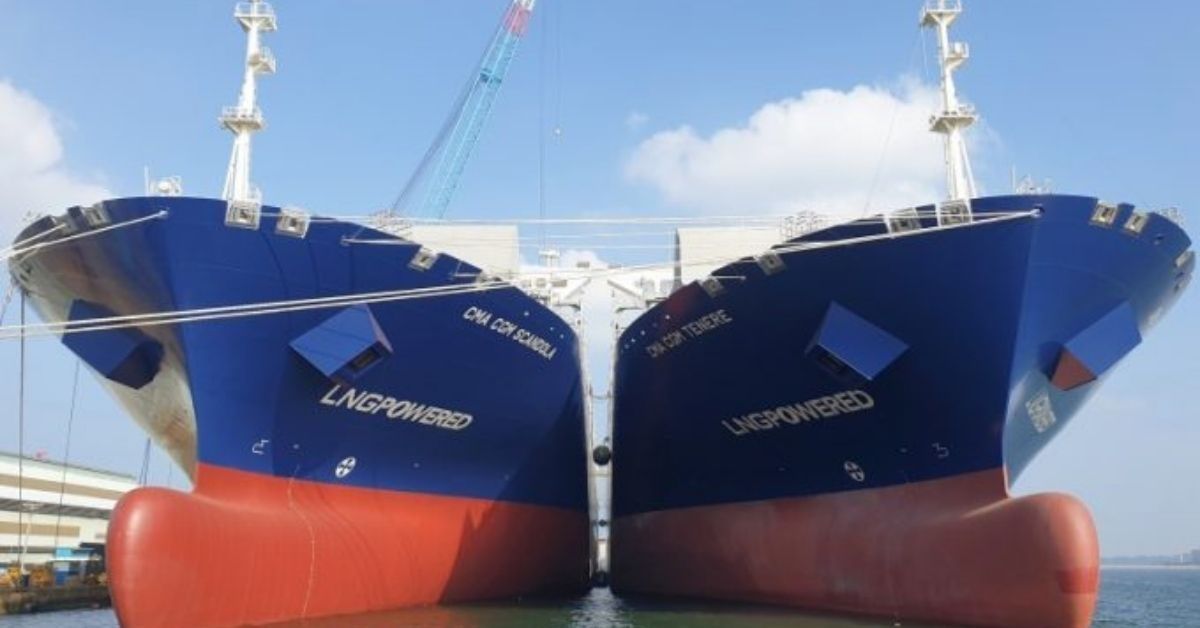Investment in new LNG-fuelled ships has continued at pace, with class society DNV last month recording a further 40 gas-powered vessels on its AFI database, to bring the total to just shy of 700.
DNV’s principal consultant, Martin Christian Wold, said the “strong start” to the year for LNG-powered vessels had been driven by containership orders by MSC.
According to the DNV database there are 261 LNG-fuelled ships in operation with 433 on order.
The carrier is also a big advocate of scrubber technology, in contrast to 2M partner Maersk, with MSC’s CEO believing the cost savings are “a no brainer”.
French carrier CMA CGM, which has pioneered the container carrier rush to LNG-fuelled ships, said it expects to have 32 LNG dual-fuel ships in its fleet by the end of this year.
However, LNG bunker prices have almost doubled in the past 12 months, with global gas prices extremely volatile.
With spot LNG having traded, in the past, at the equivalent of more than $200 per tonne more expensive than LSFO, it is not clear to what extent CMA CGM’s dual-fuelled ships bunker with the gas or consume LSFO.
It has been reported that some older LNG tank carriers that can run on a combination of the boil-off gases from their cargo and fuel oil have opted to run entirely on fuel oil to achieve cost savings.
Meanwhile, as bunker prices soar, the spread between compliant low-sulphur fuel oil (LSFO) and heavy fuel oil (HFO) continues to widen, shortening the period of scrubber installation payback for shipowners and operators.
Friday’s price for Rotterdam-sourced LSFO climbed another $14 to reach $692 per tonne, compared to HFO at $563 per tonne, meaning that a scrubber-fitted ULCV deployed on the Asia-North Europe tradelane could significantly improve its voyage account results for an 80-day round trip.
In a conversation with The Loadstar recently, one ship procurement executive claimed that round-trip fuel savings on an ULCV that bunkered with HFO was currently “in excess of $500,000”, when compared to LSFO.
Since mid-December, bunker prices have risen by around a third and, consequently, the gap between the two fuels has widened. This has benefited ocean carriers, such as HMM, that have received newbuild tonnage already fitted with scrubber technology.
Moreover, carriers that have paid a premium to containership owners for chartered vessels equipped with scrubbers are also seeing substantial voyage cost savings.
“It’s obviously easier from a planning perspective to operate a ship that is just burning low-sulphur fuel, given the constant switching of tanks for ECA and SECA regions, but the savings just cannot be ignored,” said the executive.
Fourth-quarter results coming out from the major carriers are starting to show big jumps in the average price per tonne of fuel consumed by their fleets.
For example, Japanese carrier ONE reported a 69% increase in the average price paid for fuel in the last three months of 2021, to $531 per tonne, compared with the same period of the previous year, despite an 8% decline in its liftings.
“If it were not for the huge revenues being obtained in the liner sector, there would be sheer panic about the spike in fuel costs,” said the carrier source. “But the big spikes in bunker and charter costs, although of internal concern, have been overtaken by the impact of sky-rocketing freight rates.”
Source : The Loadstar







